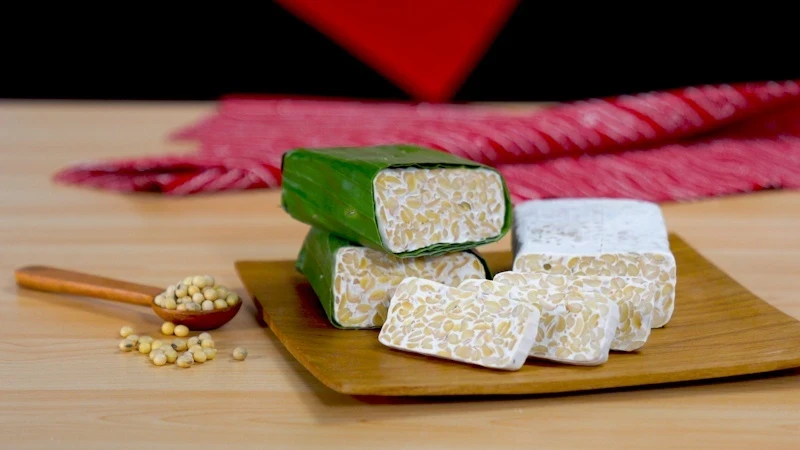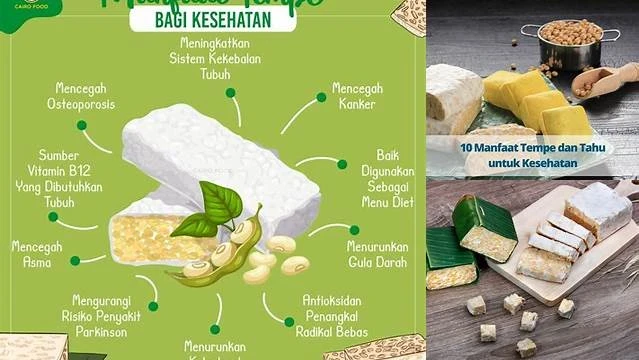
Almost every traveler who has visited Indonesia has likely heard of or tried the traditional delicacy tempeh in its various forms. What is this wonder product, what is it made of, and how is it consumed? Let's take a brief look into its past...
History
The word "tempeh" comes from the Old Javanese language. In ancient Javanese society, there was a food made from white sago flour called "tumpi," which resembled tempeh in its milky color. Unlike other traditional soy products, typically produced in China or Japan, tempeh originated in Indonesia. This traditional food has been a part of the Javanese culinary culture for centuries, especially in Yogyakarta and Surakarta.

Tempeh was first mentioned in the Javanese cultural encyclopedia "Serat Centhini," where it describes a traveler named Mas Cebolang traveling from the Prambanan Temple to Pajang, with a stop in Klaten Regency, Tembayat Village. Here, Prince Bayat hosted him with a meal, including a dish called "brambang jae santen tempeh."
By the 16th century, tempeh production began on Java and quickly gained popularity in various regions, including cities like Yogyakarta, Banyumas, Malang, and Pekalongan. The preparation technology has been passed down through generations, remaining a part of Javanese cultural heritage. This fermented soybean product is an integral part of the daily menu of the Indonesian people.
Production and Inauguration

The idea of creating a perfect tempeh production model adhering to BPOM standards was conceived as a benchmark.
Specialists developed an environmentally friendly tempeh production process. The exact strategy was meant to inspire other producers. This extensive project was developed in collaboration with Kopti Bogor, Mercycorps, and FTI (Indonesian Tempeh Forum) and aimed to become a part of the business structure under the guidance of Kopti Bogor.
The grand opening took place on June 6, 2012, in honor of Tempeh Day, symbolizing the beginning of a new era in the production of this traditional product.
Composition

Tempeh is a plant-based protein source in Indonesia, alongside tofu. Initially, it was made from black soybeans. Later, it began to be produced from other varieties of soybeans, fermented with yeast, and then wrapped in teak or banana leaves. One of the key ingredients in making tempeh is the starter culture, which plays an important role in the fermentation process.
It is made from cooked soybeans using beneficial bacteria with high protein content. Several species of the fungus Rhizopus are used in the production of this traditional product. Traditionally, home preparation of tempeh uses usār or tempeh yeast, which can be obtained from teak or waru tree leaves.
According to specialists from the Food Research Center, usār tempeh is a collection of fungal colonies ready to be planted on cooked soybeans. When the fungus grows, it forms a white layer that binds the rectangular block of cooked soybeans together.
Fermentation Method

To get really good soybean seeds, they need to be sorted and sifted. Then, they are washed under running water and placed in a pot filled with water. They are boiled for 30 minutes or until half-cooked. The boiled soybeans are soaked overnight until they become sour.
The next day, the skins are removed, making it easier for the future starter to penetrate the beans. The beans are washed again, placed in a steamer, and cooked. After cooking, they are removed from the heat and spread out to dry. The next step is to add yeast, stirring until evenly distributed. Typically, about 1g of yeast is used per 1kg of soybeans.
The fermented soybeans are then wrapped in banana leaves or plastic. They are pressed and shaped into long bricks. If the packaging is plastic, they are stored on bamboo racks placed on shelves. If the packaging is leaf-shaped, maturation occurs in a bamboo basket covered with burlap.
After marinating for one night, they are pierced with a stick to let fresh air in. They are then left for another night, and the next day the tempeh is ready. Various dishes can be prepared from it.
Main Dishes

One of the most famous dishes is oseng tempe, which is fried mendoan (tempeh mixed with onions and flour), fried tempeh in small pieces or chips.
There are also interesting variations of tempeh with coconut milk and various seasonings, tempe bakso (meatballs similar to meatballs mixed with pieces of tempeh), with spicy sambal sauce, with eggplants, grilled, soups, and much more. Indonesians are very creative in cooking and come up with many delicious recipes using this product. Almost every warung has fried tempeh and tahu (traditional snack instead of bread) on their tables.
Benefits

Tempeh has long been recognized as a product with high nutritional value. Several studies published in the 1940s-1960s showed that tempeh contains beneficial elements for the body, including fatty acids, vitamins, minerals, and antioxidants. The fermentation process in tempeh increases the degree of unsaturation of fats. These unsaturated acids help lower serum cholesterol levels, potentially neutralizing the negative effects of sterols on the body. Tempeh is a potential source of vitamins B, B1, B2, and also contains pantothenic acid, niacin, vitamins B6 and B12.
Tempeh also contains a sufficient amount of macro- and microelements. Tempeh mold can produce the enzyme phytase, which breaks down phytic acid (which binds several minerals) into phosphorus and inositol. As phytic acid breaks down, some minerals such as iron, calcium, magnesium, and zinc become more accessible for the body to use. Tempeh also contains antioxidants in the form of isoflavones, which are necessary to stop the formation of free radicals. Additionally, the protein content in tempeh supports overall body health, including heart, bone, and muscle health. If you try this Indonesian product, you might want to taste it again. It’s very easy to buy at markets, warungs, and supermarkets.




You can add one right now!